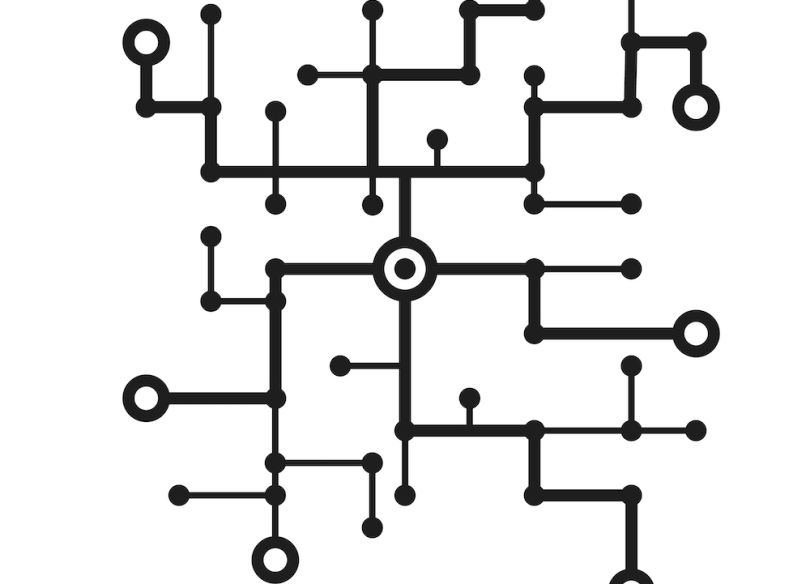You may have heard that grief has five stages: denial, anger, bargaining, depression and, ultimately, acceptance. This makes it sound like an organized, linear process, like snapping together a Lego model.
It’s not.
“Twelve years-plus after something happens, you can still feel like it just happened yesterday, and that is totally normal,” Tracey Wallace, head of marketing at commemorative diamond company Eterneva, told Built In.
Even the woman who originally formulated the five stages of grief, psychiatrist Elisabeth Kubler-Ross, put “stages” in air quotes in her bestselling book, On Death and Dying. This was to highlight the fact that some people experience multiple stages at once, and skip others altogether.
Also worth noting: Kubler-Ross’ book focused on terminally ill people, and the “stages” of grief they went through as they processed their own mortality. Not bereaved people — who go on a categorically different journey.
“Grief stays with you,” Wallace said. “It lives with you.”
American grieving traditions often rush it, though, in keeping with what Wallace calls our “fix-it culture.” The country’s Protestant roots don’t help, either, according to Baylor University religion professor Candi Cann — who’s currently researching Eterneva’s customers and their grieving process.
“In the Protestant understanding, you’re resurrected,” Cann told Built In. “So you’re not supposed to grieve. You’re supposed to be happy because now the person is up there with God ... [and] getting over it quickly.”
Hence a common American experience of death: a funeral, an outpouring of community support, and then, after about a month, crickets. The conversation dries up, or shifts toward simplistic mood-boosting hacks like “Go for a jog!”
“For a lot of people who are grieving, that is the most challenging part,” Wallace said. “All these other people seem to be moving on with their lives.”
In reality, those other people are usually anxious about bringing bereaved people down, or saying the wrong thing — not unreasonably. Grief is chaos, unpredictable even for the person living it. (Wallace noted that even the same person can handle two different deaths very differently.)
It’s hard for anyone, even an intimate friend, to know exactly what to say.
But Wallace’s job at Eterneva is, arguably, to know what to say to grieving strangers. Specifically, she has to find a way to ask them, “Would you like to turn the cremated remains of your loved ones into a commemorative lab-grown diamond?”
So far, it hasn’t been a problem.

Death, Disrupted
Etereneva isn’t the first company to try to reinvent death in America. In fact, an annual conference, Reimagine, brings together a variety of different thinkers, artists and entrepreneurs to discuss how we can better live with the reality of death.
Eterneva’s team has attended, and Wallace reports that the conference addresses three core topics: death, grief and remembrance.
Eterneva is just one of many companies innovating in the remembrance space — in its case, by extracting pure carbon from cremated ashes or hair, and putting it in a heated, pressurized lab environment that turns it into a diamond. Other companies at Reimagine experimented with digital memorials and private, personal redwood trees in place of gravestones.
Founded in 2016, the same year Eterneva got its start, the Reimagine conference was inspired by IDEO — a renowned design firm whose attempt to “redesign death” was chronicled for California Sunday.
The project, spearheaded by IDEO executive Paul Bennett, began with an app that flopped. After I Go, as it was called, would have allowed deceased people to pass down digital “lockboxes” of messages and memories to their bereaved loved ones.
The app could even ping them when they approached a location that held sentimental meaning for the deceased person.
“I actually love the idea of the app,” Cann said; she saw it as a way to keep nuclear families from rewriting and sanitizing people’s life stories after they die. (This is a particularly entrenched problem for marginalized people.)
But critics, like palliative care physician Jon Miller, worried there was something narcissistic about that premise. It functioned almost as a bid for immortality — an attempt to control the commemorative process, and maintain your relationships, from beyond the grave.
This is vaguely taboo in the United States; Protestant values encourage letting go of the dead. But it’s common for people to hang on to sentimental objects and reminders — from family heirlooms and commemorative tattoos to ghost stories.
This is perfectly healthy, according to one popular theory of grief: continuing bond theory. First advanced by bereavement scholars in the 1990s, this theory holds that healthy grieving doesn’t necessarily have an endpoint. Rather, it involves reinventing your relationship with whoever passed away “in such a way that you can move forward, but they are with you,” Cann said.
Agency is important, too, though. Who’s continuing the bond: the deceased, or the living?
“For me, it’s about what the griever needs,” Cann said. “That’s the most important thing.”
Eterneva’s diamonds center the griever’s needs — but, like the defunct After I Go app, they also allow for a continuing bond. They can function as a kind of final collaboration between the deceased and the bereaved, Cann said. A dying person can bequeath the money for an Eterneva diamond, and, of course, their ashes play a key role in the diamond-growing process.
“You don’t necessarily have to tell anyone, ‘This diamond is my daughter,’ or, ‘This diamond is my cat.’”
However, the bereaved person gets to choose the style of the diamond, and how they incorporate it into their daily life. The diamonds can function as conversation starters, breaking the awkward hush that can descend after a funeral. But they can also function as regular diamonds.
“You don’t necessarily have to tell anyone, ‘This diamond is my daughter,’ or, ‘This diamond is my cat,’” Cann said.
Eterneva’s marketing works much like the diamonds themselves: It opens up a steady flow of opportunities to continue the conversation about a loved one.
It’s easy to say no, but a lot of Eterneva customers opt in.

Destigmatize, but Don’t Push
“Eterneva’s mission in our marketing is to destigmatize grief,” Wallace said. That means fostering open, organic conversation about it on social media.
One thing it doesn’t mean: paid social media ads.
The team has tried it, but the quality of the leads was low — often, prospects wouldn’t show up to their initial consultations, Wallace said.
Eterneva’s Marketing Playbook
- No paid social — only organic, emphasis on Instagram
- Personal responses to critical social comments
- Facilitate word of mouth with free, shareable commemorative content for customers
- Paid search on keywords like “cremation diamond”
There are also user-experience issues with paid social around a topic as sensitive as death. Constantly retargeting someone who’s shown interest in a commemorative item means constantly reminding them of a tragedy; it can turn every ad-supported page they visit into a “virtual graveyard” of literal tombstone ads, as Rae Nudson wrote in Vox.
It’s easy for these ads to look insensitive, if not downright ambulance-chasing.
So Eterneva focuses its paid efforts on search, buying ad space on results pages for keywords like “memorial diamonds” and “unique things to do with cremains.”
In the social media realm, though, the company focuses on attaining organic reach. Eterneva has a handful of social accounts — Wallace’s strategy focuses mainly on Instagram — but customers also help the company spread the word. Eterneva creates a steady drip of personalized content for each of its customers, and, often, the customers share it with their friends.
The custom content begins arriving before the “homecoming” — what Wallace calls the moment when a customer receives their diamond. Lab-growing diamonds is a slow process; it takes between seven and 10 months. To demystify its inner workings, Eterneva sends customers regular photo updates.
“We like to send pictures of every single process,” Wallace said.
Customers can share these updates on social — or not.
They can also share the free, commemorative “tribute video” that comes with each diamond.
It can be “really important and helpful for [someone] who’s grieving to focus on the person’s life, not on their death,” Wallace said. “Every single person is so much more than the way that they die — the relationships that they had, the way they’ve brought joy to people.”
In that spirit, Eterneva’s staff videographer will fly out to customers wherever they are, interview them about the person (or pet) they’re commemorating, and compile a video from interviews, photos and home videos that spotlight the high points in the deceased person (or pet’s) life.
It’s strong, unselfish content marketing — it holds value and meaning for customers, and simultaneously raises awareness of Eterneva’s product. Many customers choose to share it.
Viewers choose to see Eterneva’s marketing too. It only appears in their digital feeds if they follow the brand, or follow users who bought an Eterneva diamond.
Still, the company occasionally gets trolled on social media. Wallace said her team tries to respond to every critique with earnest, clear explanation; the only comments Eterneva deletes try to make a joke out of the product.
“We’ll ... message those people individually,” Wallace said, clarifying that their comment was deleted because mocking grieving people “goes directly against what we’re trying to do.”
Which is: Shift the entire culture around grief and commemoration.
Most cultural shifts encounter skepticism. Are they progressive — or ridiculous and unnatural? We’re still having this conversation about digital connections, which are hardly new at this point, so it’s no wonder some skepticism haloes Eterneva’s efforts.
The company’s marketing pushes back against that with customer stories, though, distributed in a way that’s anything but “pushy.”
It’s hard not to relate to a family honoring their “old man” corgi who couldn’t quite shake hands on command — and that makes buying a commemorative diamond feel more relatable too.
Of course, Wallace readily acknowledges that, like a traditional gravesite, Eterneva’s diamonds aren’t for everyone. With her marketing, she’s simply focused on “giving [people] permission to memorialize somebody in whatever way they want.”




